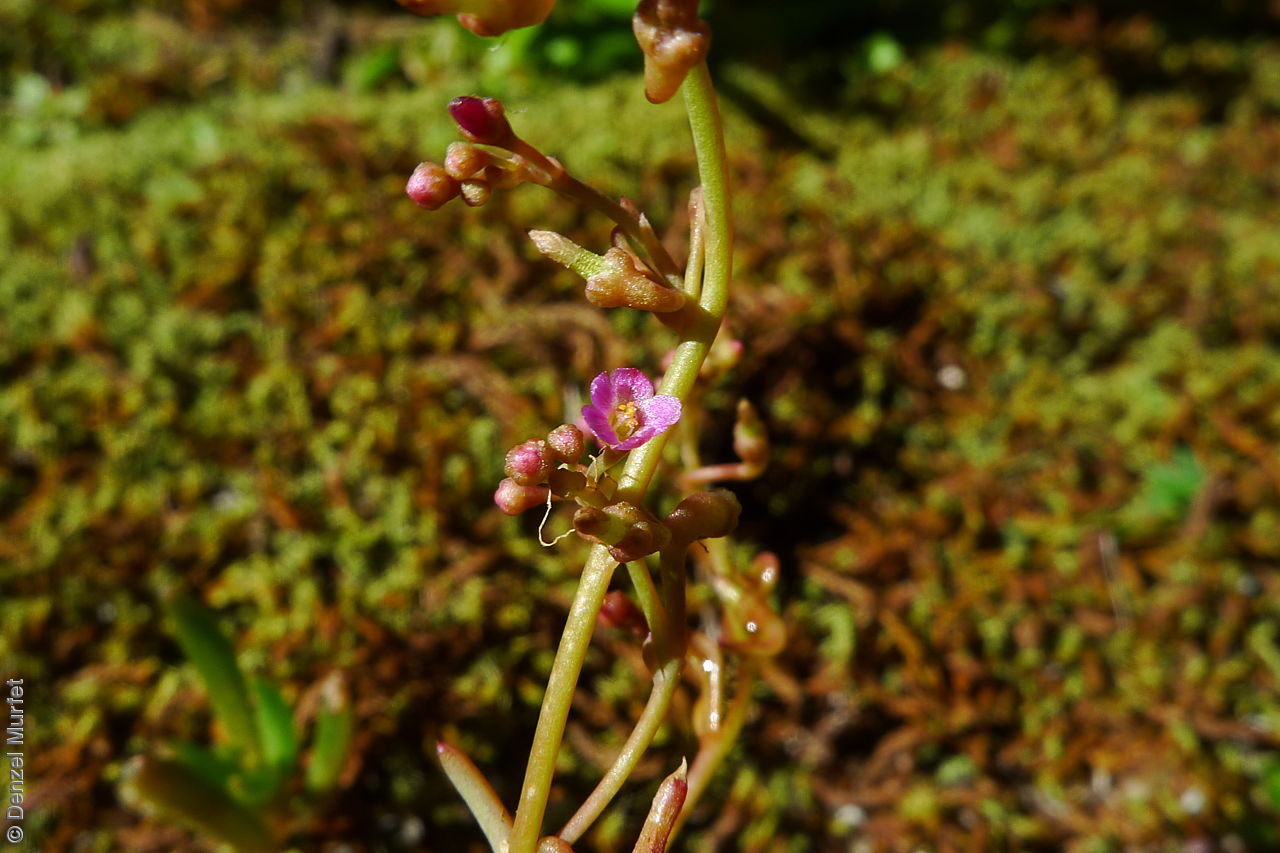








Botanical art
Prior names
Parakeelya disperma
Common names
Two-seeds Purslane
Two-seed Purslane
Etymology
Calandrinia named after Jean-Louis Calandrini (1703-1758), a Swiss scientist, professor of mathematics and philosophy. Disperma from the Greek 'di' meaning two and 'spermus' meaning a seed; referring to its capsule having only 2 seeds.
Distribution and status
Found scattered in the central and north-western parts in South Australia growing on red sand dunes. Also found in Western Australia, Northern Territory and New South Wales. Native. Common in South Australia. Uncommon in new South Wales. Common in the other States.
Herbarium regions: North Western, Nullarbor, Gairdner-Torrens, Eyre Peninsula
NRM regions: Alinytjara Wilurara, Eyre Peninsula, South Australian Arid Lands
AVH map: SA distribution map (external link)
Plant description
Decumbent orange-red annual with stems to 50 cm long. Leaves basal and on lower parts of flower stems; alternate, sessile, linear to terete, to 50 mm long and 2 mm wide. Inflorescence an open spreading panicle that curves upwards in fruit, with clusters of small, pink flowers. Flowering between July and November. Fruits are orange-brown pear-shaped capsule to 6 mm long, broadest below the middle, abruptly swollen at the base with 3-valves, opening by a terminal pore with only 2 seeds. Seeds are dark red-brown narrow-reniform seed to 1.8 mm long and 0.7 mm wide, with small tubercules at the narrow end. Seed embryo type is peripheral.
Seed collection and propagation
Collect seeds between September and January. Collect mature capsules, those that are turning a Orange-brown colour and contain dark seeds. Place the capsules in a tray and leave to dry for one to two weeks. Then rub the capsules gently by hand to dislodge the seeds. Use a sieve to separate the unwanted material. Store the seeds with a desiccant such as dried silica beads or dry rice, in an air tight container in a cool and dry place.